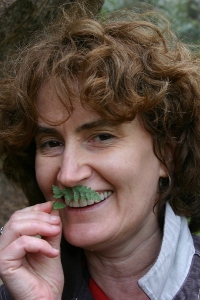Communicating science in social settings; yes, it matters

Dr. Kathleen Pryer; Duke University and the Duke Herbarium
April 13 at 12:20pm in the Fralin Auditorium, Fralin Hall room 102
Hosted by Dr. J. Metzgar
Government research funding has flat-lined across the globe. Anti-science rhetoric is on the rise. Traditional news infrastructures are eroding, while the social media landscape is exploding, fundamentally altering how we communicate. At the same time, our research on ferns and lycophytes has become increasingly technical and complex. The choice is ours: do we wring our hands over the decline in scientific literacy, or do we improve our ability to communicate through an audienceís preferred medium? Good science communication not only empowers citizens, it enriches the lives and careers of scientists. Here, I draw from my own research and teaching experiences focused on ferns (and other plants of the seed-free genre) to show how I have come to embrace the call to communicate oneís science more broadly. To effectively get our message across, it is important to understand the existing knowledge base of oneís intended audience, and to be versatile with modes of communication. Continued progress in our field will require more creativity to remain competitive for traditional forms of research funding, while simultaneously identifying and targeting new resources.



This seminar will be livestreamed here. The video will be archived on this page, and on the Fralin Life Science Institute YouTube channel.


